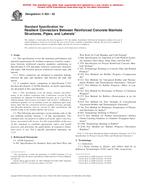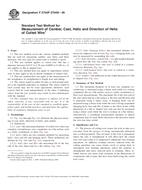1.1 This guide covers some general information on methods for qualitative and quantitative assessment of the behavioral responses of fish during standard laboratory toxicity tests to measure the sublethal effects of exposure to chemical substances. This guide is meant to be an adjunct to toxicity tests and should not interfere with those test procedures.
1.2 Behavioral toxicosis occurs when chemical or other stressful conditions, such as changes in water quality or temperature, induce a behavioral change that exceeds the normal range of variability (1). Behavior includes all of the observable, recordable, or measurable activities of a living organism and reflects genetic, neurobiological, physiological, and environmental determinants (2).
1.3 Behavioral methods can be used in biomonitoring, in the determination of no-observed-effect and lowest-observed-effect concentrations, and in the prediction of hazardous chemical impacts on natural populations (3).
1.4 The behavioral methods described in this guide include locomotory activity, feeding, and social responses, which are critical to the survival of fish (4).
1.5 This guide is arranged as follows:
1.6 The values stated in either inch-pound or SI units are to be regarded as the standard. The values given in parentheses are for information only.
This standard does not purport to address all of the safety concerns, if any, associated with its use. It is the responsibility of the user of this standard to establish appropriate safety and health practices and determine the applicability of regulatory limitations prior to use.
Product Details
- Published:
- 05/15/1995
- Number of Pages:
- 12
- File Size:
- 1 file , 110 KB


